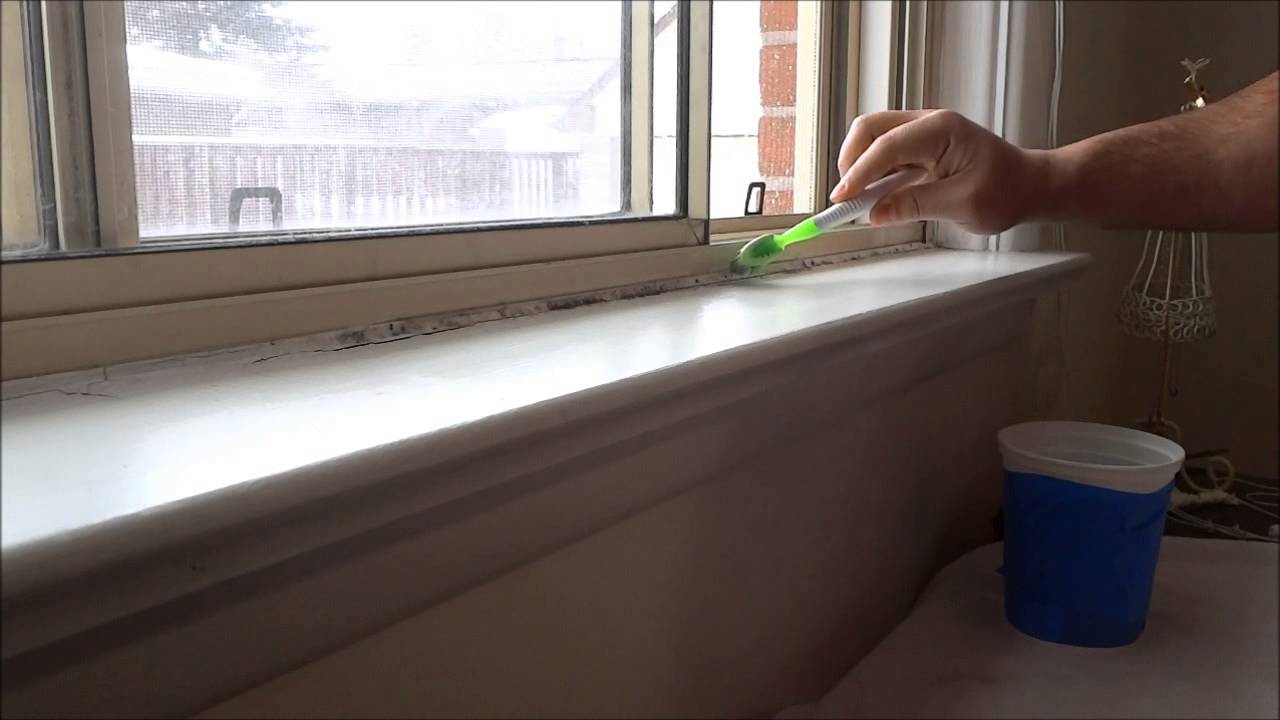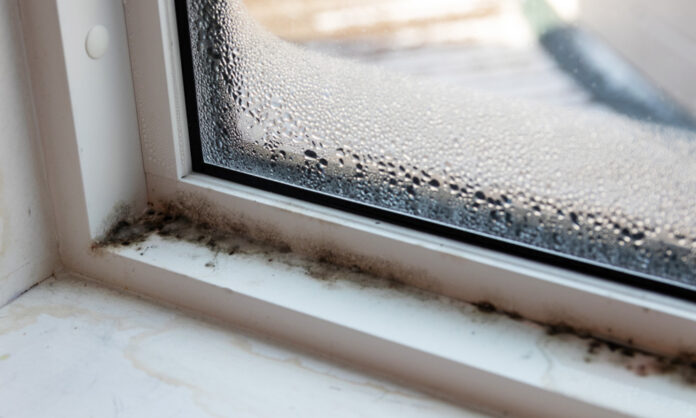In the quest for a clean and healthy home, only some things are as persistent and unwelcome as mould and mildew.
These unsightly invaders often find their way onto our window sills and frames, causing not only cosmetic concerns but also potential health issues.
However, with the proper knowledge and preventative measures, you can keep your window areas free from mould and mildew, ensuring a fresh and inviting living space.
Understanding the Causes
Before we delve into prevention, it’s crucial to understand why mould and mildew tend to gravitate towards window sills and frames. What are the reasons, and how do mould and mildew affect window sills and frames?
Factors Leading to Mould and Mildew Growth
Mould and mildew thrive in damp and humid environments. Window sills and frames, being close to the outdoors, are particularly susceptible. Rainwater seeping, condensation forming on cool surfaces, and even indoor humidity levels can contribute to their growth.
Several key factors contribute to this vulnerability:
- Moisture intrusion. One of the primary culprits behind mould and mildew infestations on window sills and frames is moisture infiltration. Rainwater, often driven by wind, can find its way into the crevices and gaps around windows, creating an ideal breeding ground for these microorganisms.
- Condensation formation. Condensation forms when warm, moist indoor air comes into contact with cold window surfaces. Given the typically cooler temperatures of window sills and frames, condensation readily accumulates in these areas, providing the necessary moisture for mould and mildew to thrive.
- Indoor humidity. Even indoor factors can contribute to the problem. High humidity levels within a home can exacerbate the issue by increasing the overall moisture content in the air. This excess humidity can migrate towards window sills and frames, further promoting mould and mildew growth.
How Window Sills and Frames Are Vulnerable
The vulnerability of window sills and frames to mould and mildew is a result of both their location and their structural characteristics:
- Microscopic crevices and imperfections. Window sills and frames often possess tiny cracks, joints, and gaps that provide perfect hiding spots for mould spores. These concealed spaces offer protection from light and airflow, allowing mould and mildew to flourish undisturbed.
- Proximity to exterior wall. Window sills and frames are situated close to the outer walls of a building. As a result, they tend to be cooler than the indoor environment. This temperature difference encourages the formation of condensation as moist indoor air meets the colder window surfaces. When combined with the existing moisture from rain and humidity, this condensed moisture fosters an environment where mould and mildew can thrive.
Regular Cleaning and Maintenance
The first step in your battle against mould and mildew is establishing a regular cleaning and maintenance routine. It keeps your window sills and frames looking pristine and removes potential mould and mildew spores. This proactive approach is your first line of defence.

How to Maintain Window Sills and Frames
Maintenance is an essential part of keeping your window sills and frames mould-free. Here’s a list of all of the steps you can take to prevent moisture damage:
- Cleaning materials and techniques. When cleaning window sills and frames, use mild soap and water or a mixture of vinegar and water. Avoid using harsh chemicals, as they can damage the finish and paint. Gently scrub the surfaces and wipe them dry to prevent moisture accumulation.
- Improve airflow. Good ventilation helps maintain a consistent airflow that discourages dampness. Consider installing exhaust fans in areas prone to humidity, such as bathrooms and kitchens. Also, use window fans to create cross-ventilation, allowing moisture-laden air to escape. Open your windows regularly to let fresh air circulate throughout your home.
- Maintain indoor humidity levels. The ideal indoor humidity level should be around 30-50%. Invest in a hygrometer to monitor humidity and adjust it accordingly. In areas with persistent humidity issues, a dehumidifier can be invaluable. Also, avoid drying clothes indoors and promptly fix any plumbing leaks to reduce moisture levels.
- Identify and seal potential entry points. Carefully inspect your windows for gaps and cracks, especially where the frame meets the wall. Mould and mildew can quickly enter through these openings. If you notice any gaps, use silicone caulk or weatherstripping to seal any holes or cracks you find. These materials create a waterproof barrier, preventing moisture intrusion.
- Use mould-resistant materials. Mould-resistant paints and sealants are designed to inhibit mould and mildew growth. Apply them to your window sills and frames for added protection. When selecting mould-resistant products, ensure they are suitable for the specific materials used in your windows. Proper application is crucial to their effectiveness.
- Landscaping and exterior drainage. What happens outside your home can impact the moisture levels inside, including around your windows. Strategically design your landscape to divert rainwater away from your home’s foundation. The ground around your windows should slope away from your home. This prevents rainwater from collecting near the window sills and frames. Don’t forget to regularly clean and unblock your gutters as well.
- Use window covers. Window coverings like blinds, curtains, and shades can reduce condensation by insulating the window surface. Choose coverings that are easy to clean to prevent moisture accumulation.
- Reduce condensation. To reduce condensation, maintain a consistent indoor temperature, use exhaust fans when cooking or bathing, and consider adding storm windows to minimise temperature variations.
- Regularly inspect. Frequent inspections allow you to identify and address potential mould and mildew problems before they become significant.
- Treat mould and mildew early. Take immediate action if you spot any signs of mould or mildew. Clean the affected area using appropriate cleaning solutions, and ensure it’s completely dry before resealing or repainting.
How to Clean Mould and Mildew from Window Sills and Frames
Cleaning mould and mildew from window sills and frames is essential for a healthy and aesthetically pleasing living space. If you want to clean the mouldy spots, you’ll need a spray bottle filled with equal parts white vinegar and water, a soft-bristle brush, a cloth or sponge, and protective gear like gloves and a mask.
Begin by ensuring proper ventilation in the area to reduce exposure to spores. Then, liberally spray the areas affected by mould and mildew with the vinegar and water solution. Let it sit for approximately 10-15 minutes. The acidity of vinegar will help break down the mould and mildew.
Once the time is up, gently scrub the window sills and frames with the soft-bristle brush. You should be thorough and pay close attention to crevices and corners where spores tend to hide.
After that, use a cloth or sponge to wipe away the loosened mould and mildew. If necessary, repeat the process until the mouldy spots are completely clean.
Once you’ve removed the mould and mildew, thoroughly dry the window sills and frames. This step prevents future growth, as mould and mildew thrive in moist environments.
Consistent cleaning and effective moisture control are essential for keeping your window sills and frames free from mould and mildew over time, maintaining a healthy and pristine living space.
However, if this task is too time-consuming or cumbersome for you, you can always hire a local window cleaning service. You can enjoy your free time while the professionals do it for you.
Conclusion
Preventing mould and mildew on your window sills and frames is about aesthetics and ensuring a healthy living environment.
You can maintain a mould and mildew-free home by understanding the causes, implementing regular cleaning and maintenance, controlling humidity, etc.
Regular inspections and early intervention are your allies in this ongoing battle, helping you enjoy a cleaner, healthier, and more comfortable living space.


















